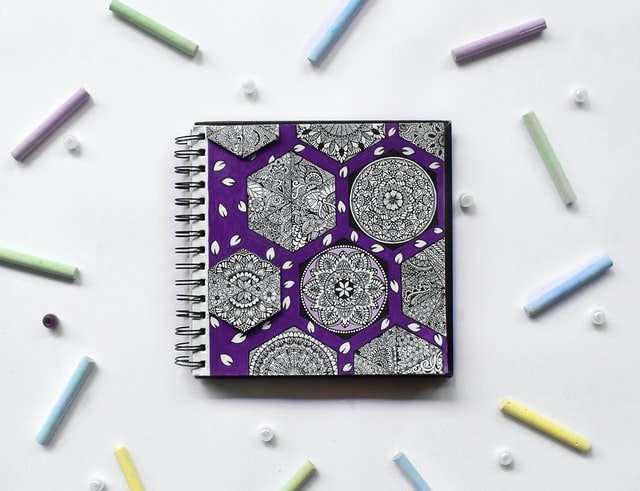Abstract art is also called non-objective art, because the images are not intended to represent specific objects or people. Some abstract art uses lines and shapes, while other abstract art can only be seen in a particular way.
The following pages of abstract art are available for you to enjoy and share with your friends. The artists featured here were all interviewed personally and they were all given the opportunity to say why they create their unique works of abstract art. Abstract Artwork that Inspires is a blog about abstract art, including interviews with artists from many different countries, as well as information about where to find abstract artwork for sale and auction.”
Abstract art was born when artists began to break away from the traditional (realistic) art form. It requires an open mind and a willingness to think outside of the box.
T he abstract work that we see today is actually a mix of many different styles, but at its heart is geometric abstraction.
Geometric abstraction became popular in the early 1900s, and featured works made up of straight lines, circles and other geometric shapes. It was often used in combination with other styles such as cubism or surrealism.
Abstract artworks made up of these geometric shapes can be bold and striking, or subtle and soft. Abstract art often provokes an emotional response from viewers, which is why it makes for such great interior design pieces.
Many artists who created abstract works have become famous names themselves, including Wassily Kandinsky and Piet Mondrian. But there are many contemporary artists working with this artistic style too, perhaps most notably Damien Hirst.
Abstract art is a term used to define art that uses elements of design and form rather than naturalistic representation. This form of art was made popular in the mid-20th century by artists like Mondrian, Kandinsky, Malevich, and others. It is a style appreciated by many, including graphic designers and interior designers, who find it inspiring.
Artwork that displays abstract elements can be found in nearly every culture and throughout history. Ancient Egyptian hieroglyphs are examples of abstract artwork, as are the geometric designs on Greek pottery and the mosaics of Italian churches. The ancient Sumerians created abstract designs on their pottery many years before European artists came to view this as an acceptable style for other types of artwork.
Sculpture has long been known for its ability to convey beauty through its use of abstract shapes and forms. Arguably one of the most famous example of abstract sculpture is Michelangelo’s Pieta’.
In modern society there are numerous public artworks that display elements of abstract design. One example is the sculpture entitled “The Bean” at Chicago’s Millennium Park. This public artwork was designed by artist Anish Kapoor and depicts a giant reflective steel disc measuring 100 feet in diameter. This enormous sculpture was created to reflect
Abstract art is a modern trend that came into fashion in the twentieth century. Looking at it, you may think that it has no meaning, but it actually implies something.
Abstract art can have different meanings to different people. It ranges from representational works like the ones made by Wassily Kandinsky, which are loosely based on reality, to the more abstract works of artists like Piet Mondrian, who believed in the perfect symmetry of rectangles and lines. Many artists believe that their abstract art communicates a message to those who view it.
USA Today published an article about a retrospective exhibit of the work of Mark Rothko at The Phillips Collection in Washington D.C.. In this article, Rothko’s son said that his father wanted his paintings to be “deprived of all rhetoric,” which gave them meaning for him. Rothko was trying to “communicate with an almost transcendental immediacy.” The colors he used were carefully chosen so that they would blend together in a way that would evoke emotion without being too specific about what emotion would be evoked.
Here is an abstract painting by Rothko called Untitled (Orange, Black and Red). The colors are well-blended together, but still leave room for individual interpretation:
Abstract art is the kind of art that doesn’t represent anything in particular. There are lots of different kinds of abstract art, but they all have in common that they don’t try to copy something that already exists.
Abstract art is very different from realistic art, which tries to copy things that already exist. Some people think this makes realistic painting more valuable than abstract art, but there are good reasons why abstract art is actually more interesting than realistic painting.
Trying to capture the real world on a canvas can never be completely successful because nothing can ever exactly match reality. Artists have always known this, and have often tried to convey their feelings about the world by creating images that look like something we might see if we looked at them with our eyes closed or in a different mood.
We know this kind of image as “abstract,” although it isn’t always recognized for what it is. Take, for instance, the famous painting “American Gothic” by Grant Wood: most people think it’s a picture of a farmer and his daughter, but actually it’s an example of abstract art because the faces were intentionally distorted in order to make them look odd and disturbing.
A good way of understanding abstract art is to think about paintings like these that are not immediately recognizable as
Abstract art can be defined as a visual art that seeks to express the artist’s sensory impressions rather than depict objects. The formal elements of abstract art are visual shapes and forms rather than color, realistic representation, or imagery. Abstract art often has a strong influence on other art forms, such as architecture and fashion.
Cezanne is one of the most influential artists in the transition to modern art, as he was one of the first avant-garde artists to perceive abstract painting as an artistic language in itself. Wassily Kandinsky is also considered one of the most influential painters and printmakers of the 20th century; he is credited with painting one of the first purely abstract works. Picasso’s Les Demoiselles d’Avignon (1907) could be interpreted as a large-scale, stylized and simplified abstraction of the figures and poses of his friend Henri Matisse’s Le Bonheur de Vivre (1905).
Many theorists have analyzed abstract art in terms of its visual qualities and social functions. The concrete poet, poet and artist Robert Filliou theorized that abstract art is “abstracted” from nature, whereas figurative painting represents nature directly by depicting objects in nature, not by translating into another form
Abstract art is the kind of artwork that doesn’t have a real-life resemblance to anything. It uses color, form and line in such a way that it creates an image in the mind of the viewer. There are many different styles of abstract art, but they all have one thing in common — they don’t try to represent anything concrete.
T hese pictures usually make sense to viewers on an emotional level, although they may not be able to say why they feel a certain way when looking at them. Some artists are also working in more than one style of abstract art, as well as figurative art.
Artists can create abstract art by using any number of different materials, including paint (oil or acrylic), charcoal, ink, pencil or crayons. They can also use photography techniques like solarization or photomontage to create unique ways to express their ideas and emotions through artwork.
The first abstract paintings were created in the late 19th century CE by several different artists. The definitions of what constitutes abstract art aren’t always clear cut, as even some seemingly representational paintings might also be considered abstract because of different factors involved in their creation.
Some believe that “abstract” refers only to work that doesn’t follow a particular set of


